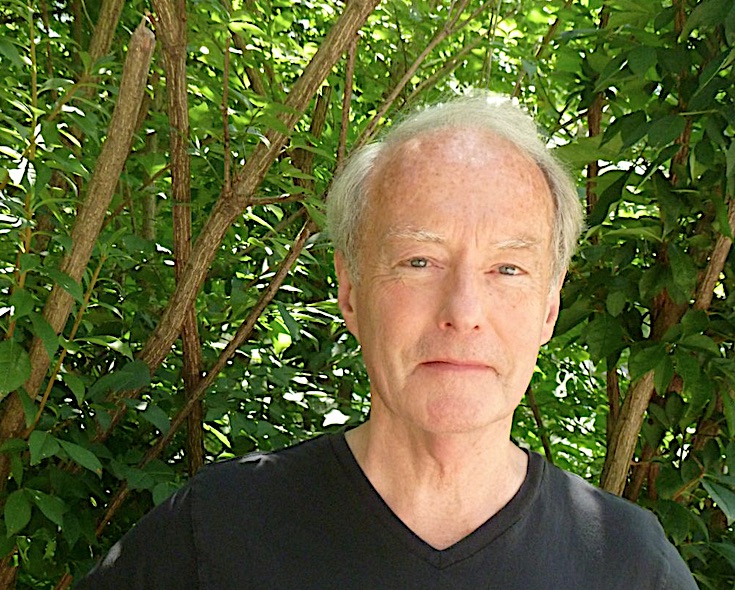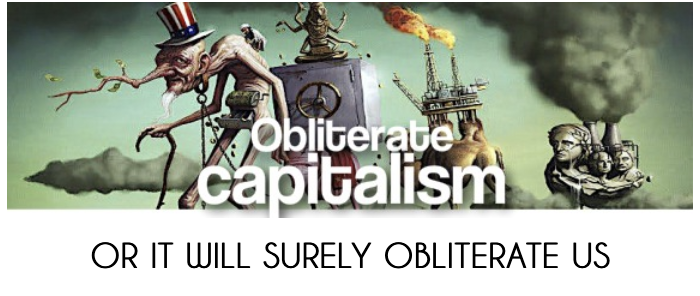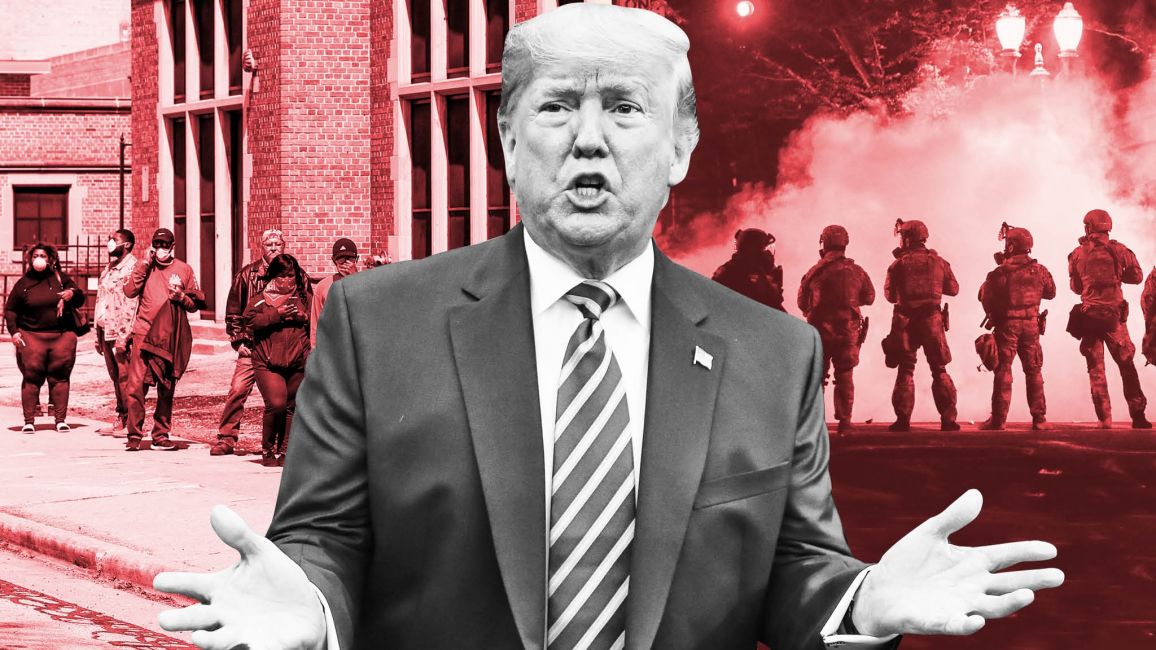Neurosis to a greater or lesser degree is the norm in western industrialized societies. Drawing on this fact is the key to effective propaganda. It is well known that neurotics always return to the place they are running away from. It’s a circle game of frustration in which being frustrated is actually the “solution,” because the real problems cannot be faced. The Donald Trump phenomenon is an example of this on a social level.
Everybody knows that Trump is loved or hated in equal measure. And everyone knows he dominates the minds of those who love or hate him, just as the media endlessly focuses on him in a way that only very obtuse people would fail to analyze. The media made Trump and he is their gold mine and the key to the effective propaganda they run for their masters in high finance and the intelligence agencies. Although his image seems big and bold and brazen, it is like an Impressionist painting that, as the art critic John Berger writes in “The Eyes of Claude Monet,” “… is painted in such a way that you are compelled to recognize that it is no longer there …. You cannot enter an Impressionist painting; instead it extracts your memories. In a sense it is more active than you – the passive viewer is being born; what you receive is taken from what happens between you and it. No more within it.”
Like Trump, the impression is fugitive, here and gone, vague and precise. Its meaning is fleeting. Mutation and flux and the evanescence of appearances are its essence. As with Trump, nothing is really clear, although many claim it is. Monet was painting at a time (the late 19th and early 20th centuries) when, due to technological and economic changes, an old world was dissolving into the modern. Jump a century or more and we have Trump and the electronic media where vagueness and flux rule perceptions.
Celebrity Culture
For Trump is a product of celebrity culture that has come to dominate our world that reminds you that the world of the past has become a reality television show and all the talk about the good old days is an illusion and that we are now living in a society where experience has been reduced to meaningless and ephemeral gestures. The politicians of all stripes play ghosts.
America will never be great again, for it is corrupted to the core and the mass media present it in images that have no bearing on reality. This is something neurotics cannot face, so they still follow the circle game played by the media and fight political battles that are exercises in frustration. But it keeps them busy. Like a sports fan whose favorite team has just lost a game or had a losing season, there is always tomorrow, next season, or the upcoming election.
Before Donald Trump emerged on the national scene with his 2015 announcement that he was running for the presidency, he was known as a wealthy real estate operator who had often declared bankruptcy and a comical reality-television host with a strange hairdo. In short, he was a wealthy celebrity with huge mansions who cavorted with the rich and famous, including former President Bill Clinton and Hillary Clinton, among many others.
How such a billionaire celebrity could ever have become president and have such a large following among the white working class – the “deplorables” in Hillary Clinton’s elitist lingo – has its roots in the transformation of American culture from the late 1950s to today when illusion and performance have replaced any semblance of reality.
Boorstin, Postman, and Gabler
Daniel Boorstin described this transformation in its early days in his brilliant book, The Image: A Guide to Pseudo-Events in America (1962). He dissected the radical change taking place whereby images and manufactured pseudo-events – “however planned, contrived, or distorted – have become more vivid, more attractive, more impressive, and more persuasive than reality itself.” What I describe as neurotic circling, Boorstin called tautologies. In this new theatrical world of mirrors, people imitate themselves by looking into the mirror of themselves imitating the famous people of all stripes: actors, politicians (excuse the repetition), celebrities, et al. Boorstin writes:
Our very efforts to debunk celebrities, to prove (whether by critical journalistic biographies or by vulgar ‘confidential’ magazines) that they are unworthy of our admiration, are like efforts to get ‘behind the scenes’ in the making of other pseudo-events. They are self-defeating. They increase our interest in the fabrication …. The hat, the rabbit, and the magician are all equally news.
Thirty years after The Image, Neil Postman added to this critique by showing how the new computer technology was tyrannizing over all human values and ways of knowing. In Technopoly: The Surrender of Culture to Technology, he showed how the ecology of technology, wherein “One significant change generates total change,” creates a totally new world where cultural and personal coherence become nearly impossible. In a Technopoly where technology and technique rule over all life, any sense of truth dissolves like soap bubbles. “That it why it is possible to say almost anything without contradiction provided you begin your utterance with the words ‘A study has shown … ‘or “Scientists now tell us that … ‘” Scientism and gibberish blend with technological tricks to create an electronic digital society where, in Boorstin’s words, “the news behind the news” – or the creation of the illusions – becomes the most interesting news of all, even as its debunking is a tautology like the definition of a celebrity: Someone who is known for being known.
Finally, in 1998 Neal Gabler put the finishing touches on these developments with his book, Life: The Movie: How Entertainment Conquered Reality. Drawing on Boorstin and Postman, he argued that in the United States life itself had become an ongoing movie in which the manipulation of reality and real life melodramas, the movies and the new information technologies, had melded into a cultural transformation so profound that it marked the end of traditional values and/or the start of a brave new world. When fiction replaced facts and everything became entertainment in a technological kaleidoscope, “life itself was gradually becoming a medium all its own, like television, radio, print, and film, and that all of us were becoming at once performance artists in and audience for a grand, ongoing show…” The traditional media turned from some semblance of reporting actual news to become conveyors of “lifies” (a predecessor of “selfies”) – a flood of entertainments taken from soap-operatic events hyped to the teeth – while theatrical techniques were applied to politics, religion, war, etc., and everything became show business, including the presidency and the national sitcom of political reporting.
Political Theater and Propaganda
This is the context for Trump’s rise to prominence. It makes clear that he is not an aberration but part of a long development that gave us the acting president Ronald Reagan and all the presidential performers who have followed. One could say, if Trump never existed, he would have to be invented, which of course he has been, as was Bush, Clinton, Bush II, Obama, and Biden. Is it surprising that the Ukrainian president Zelensky is a comedic television and movie actor? Performers such as these follow their Director’s orders.
Furthermore, all these developments omit the crucial part played by government propaganda apparatuses in conjunction with the media and technology conglomerates. The growth of such massive propaganda is entwined with all these cultural changes, although it is not the primary focus of the three books mentioned. When all these threads are woven together, we arrive at our current situation – a vast tapestry of lies.
There are various schools of thought on the Trump phenomenon, and most say more about the thinkers than their thoughts. I am referring to Trump’s rise to prominence, his 2016 election, his presidency, and all that continues to transpire around him in 2022 and into the future. (And although Trump will be an old man in 2024 – the same age that Biden is today – you can be assured he will be garnering the headlines then.)
Monet Paints Trump
These diverse impressions of what it all means fall into at least four categories, which I will sketch as I see them.
Trump supporters seemingly came out of nowhere in 2016, but this is false. If anything, they have been smoldering for many decades and their complaints have been mounting for many good reasons. In 1969, Pete Hamill, the New York journalist, wrote an article for New York Magazine called “The Revolt of the White Lower Middle Class.” He said:
They call my people the White Lower Middle Class these days. It is an ugly, ice-cold phrase, the result, I suppose, of the missionary zeal of those sociologists who still think you can place human beings on charts. It most certainly does not sound like a description of people on the edge of open, sustained and possibly violent revolt. And yet, that is the case. All over New York tonight, in places like Inwood, South Brooklyn, Corona, East Flatbush, and Bay Ridge, men are standing around saloons talking of their grievances, and even more darkly about possible remedies. Their grievances are real and deep; their remedies could blow this city apart.
The White Lower Middle Class? Say that magic phrase at a cocktail party on the Upper East Side of Manhattan and monstrous images arise from the American demonology. Here comes the murderous rabble: fat, well-fed, bigoted, ignorant, an army of beer-soaked Irishmen, violence-loving Italians, hate-filled Poles. Lithuanians and Hungarians (they are never referred to as Americans) …. Sometimes these brutes are referred to as ‘the ethnics’ or ‘the blue-collar’ types. But the bureaucratic, sociological phrase is White Lower Middle Class. Nobody calls it the Working Class anymore.
He went on to quote various white working-class New Yorkers, their quiet bitterness, their ignorant racism fueled by a media that emphasizes “the politics of theatre, its seeming inability to ever explain what is happening behind the photographed image,” which results in a superficial understanding of what is really behind their frustrated complaints that they too are victims of the system and are not respected. In an article ostensibly about New Yorkers, Hamill explained where such anger came from, not to justify misdirected racism or ignorance of how things actually work in this country. Update his account, and you have a good portion of Trump’s followers today. His description is just as apt today: “The working-class white man is actually in revolt against taxes, joyless work, the double standards and short memories of professional politicians, hypocrisy and what he considers the debasement of the American dream.”
The perplexing thing, only explained by the rise of celebrity culture, the Internet, and the dumbing-down of the general public, is how Trump, a billionaire reality-TV buffoon could garner their devoted allegiance. A man so different from them, many of whom come from states with large rural populations and Trump a quintessential New Yorker who probably never got his hands in the earth. Of course, he said many of the things they were desperate to hear about making the U.S.A. great again, no foreign entanglements, etc., many appealing things after they spent so many years hearing the politicians talk the same jive talk about invading this country and that and fighting Russia to the death. His message appealed to many. They bought his spiel as if he would save them; a claim that all politicians use, but he was touching the suppressed underbelly of the American delusion. An upper-class politician talking about, among other things, class matters.
Then there is the liberal counterpoint to Trump, which is essentially the Democratic Party’s interpretation that Trump represents a shocking neo-fascist resurrection of the historically racist, isolationist strain in American history. This position is ironically consonant with the extremist 1950s claims of Senator Joseph McCarthy and his ilk – Nixon and Trump’s lawyer friend Roy Cohn, who represented McCarthy – who claimed there were communists under every bed and the Russians (U.S.S.R.) were coming to seize our liberties. The accusations against Trump, being led by The New York Times, the Washington Post, CNN, etc., are that he is a Russian-connected operative, a stooge, and that he is intent on undermining American democracy and establishing an American totalitarianism; that he stole the 2016 election with the help of Russia; and that he always has been in cahoots with Vladimir Putin. The liberals who hold this assessment of Trump, what some critics call “Trump derangement syndrome,” are as devoted to their assessments as are Trump’s supporters. Both groups look to Trump as an angel or devil; he transfixes both in equal measure.
Aside from those who see Trump as a savior or Satan, there are various other opinions of him that cross ideological divides. Most are equivocal, at best. Some leftists admire him for his less belligerent stance toward Russia and understand the totally debunked Russia-gate accusations against him and the impeachment proceedings as confirmation of his sincerity, although they do not endorse some of his other positions. Others view him as the personification of the rise of neo-fascist, far-right Christian fundamentalism, while also seeing Biden and the Democrats as perfidious fools leading the country to disaster. Some conservatives like aspects of his agenda, as do a small number of libertarians, but they remain very wary. There are many variations on these opinions with most falling somewhere between a rock and a hard place. A sort of pox on both contestants in the electoral game, but most are based on the presupposition that the show must go on, even as both sides claim electoral fraud when their side loses. This is the frame within which impressions of Trump and his opponents are formed.
Rarely is it considered – and this is the take of a tiny minority – that with the rise of celebrity culture, pseudo-events, image-making, and the vast, sophisticated, electronic, intelligence, propaganda apparatus, that Donald Trump is not the impressions he gives off but a creation of hidden forces manipulating reality to an unimaginable extent. That Trump is not the arch-enemy of Biden or Clinton or any Democrat, but that he is a partner in a great game of deception in which the good guys and bad guys play their parts for the Great Director. It is worth remembering what Barbara Honegger, who was present in the West Wing of the White House in February 1981, overheard that day:
We’ll know our disinformation is complete when everything the American public believes is false. – William J. Casey, CIA Director
It is also worth considering a different version of the point the psychologist James Hillman and the writer Michael Ventura raised with their book We’ve Had a Hundred Years of Psychotherapy and the World’s Getting Worse. People might ask themselves if over the past fifty or five years their lives have gotten better or worse under all the American presidents, including Biden and Trump. The answer is obvious. Therefore, maybe it is time to imagine the most extreme possibility: That Casey’s statement has come to fruition.
It is not just painters and comedians who do impressions.
Print this article
 Educated in the classics, philosophy, literature, theology, and sociology, I teach sociology at Massachusetts College of Liberal Arts. My writing on varied topics has appeared widely over many years. I write as a public intellectual for the general public, not as a specialist for a narrow readership. I believe a non-committal sociology is an impossibility and therefore see all my work as an effort to enhance human freedom through understanding. His latest book is the widely acclaimed Seeking Truth in a Country of Lies.
Educated in the classics, philosophy, literature, theology, and sociology, I teach sociology at Massachusetts College of Liberal Arts. My writing on varied topics has appeared widely over many years. I write as a public intellectual for the general public, not as a specialist for a narrow readership. I believe a non-committal sociology is an impossibility and therefore see all my work as an effort to enhance human freedom through understanding. His latest book is the widely acclaimed Seeking Truth in a Country of Lies.
Covid-19 has put this site on ventilators.
DONATIONS HAVE DRIED UP...
PLEASE send what you can today!
JUST USE THE BUTTON BELOW

[premium_newsticker id=”211406″]
![]() This work is licensed under a Creative Commons Attribution-NonCommercial 4.0 International License
This work is licensed under a Creative Commons Attribution-NonCommercial 4.0 International License
ALL CAPTIONS AND PULL QUOTES BY THE EDITORS NOT THE AUTHORS
Read it in your language • Lealo en su idioma • Lisez-le dans votre langue • Lies es in Deiner Sprache • Прочитайте это на вашем языке • 用你的语言阅读
[google-translator]








